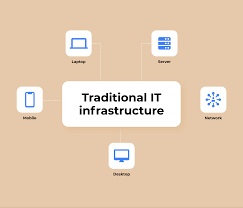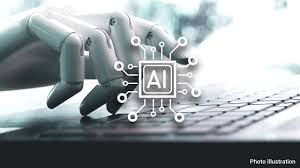Optimizing Your Business with a Robust IT Infrastructure Strategy
The Importance of IT Infrastructure in Today’s Business Environment
In the digital age, a robust and efficient IT infrastructure is essential for the success of any business. IT infrastructure encompasses all the components necessary to operate and manage information technology within an organization.
From hardware such as servers, computers, and networking equipment to software applications and databases, a well-designed IT infrastructure provides the foundation for seamless communication, data management, and operational efficiency.
Key Components of IT Infrastructure
Key components of IT infrastructure include:
- Hardware: Servers, workstations, routers, switches, and other physical devices that support IT operations.
- Software: Operating systems, applications, databases, and other software tools that enable business processes.
- Networking: Infrastructure such as routers, switches, firewalls, and network cables that facilitate communication between devices.
- Data Storage: Systems for storing and managing data securely and efficiently.
- Security Measures: Tools and protocols to protect data from unauthorized access or cyber threats.
The Benefits of a Strong IT Infrastructure
A well-designed IT infrastructure offers numerous benefits to businesses:
- Improved Efficiency: Streamlined processes and automated tasks lead to increased productivity.
- Enhanced Communication: Seamless communication channels enable collaboration among employees and departments.
- Data Security: Robust security measures protect sensitive information from cyber threats.
- Better Decision-Making: Access to real-time data allows for informed decision-making at all levels of the organization.
The Future of IT Infrastructure
As technology continues to evolve rapidly, businesses must adapt their IT infrastructure to meet changing demands. Cloud computing, artificial intelligence (AI), Internet of Things (IoT), and other emerging technologies are reshaping the way organizations operate.
In conclusion, investing in a reliable and scalable IT infrastructure is crucial for businesses looking to stay competitive in today’s fast-paced digital landscape. By leveraging the power of technology effectively, organizations can drive innovation, improve operational efficiency, and achieve sustainable growth in the long run.
6 Essential Tips for Maintaining a Secure and Efficient IT Infrastructure
- Regularly update software and firmware to ensure security patches are in place.
- Implement strong password policies and consider multi-factor authentication for added security.
- Backup data regularly and store it securely offsite to protect against data loss.
- Monitor network traffic for any unusual activity that may indicate a security breach.
- Document your IT infrastructure setup and procedures to facilitate troubleshooting and maintenance.
- Consider implementing virtualization technology to optimize resource utilization and scalability.
Regularly update software and firmware to ensure security patches are in place.
Regularly updating software and firmware is a critical aspect of maintaining a secure IT infrastructure. By staying current with updates, organizations can ensure that security patches are promptly applied to address vulnerabilities and protect against potential cyber threats. These updates not only enhance the overall security posture of the system but also help in safeguarding sensitive data and maintaining the integrity of operations. Prioritizing software and firmware updates demonstrates a proactive approach to cybersecurity and minimizes the risk of exploitation by malicious actors.
Implement strong password policies and consider multi-factor authentication for added security.
Implementing strong password policies and considering multi-factor authentication are crucial steps in enhancing IT infrastructure security. By enforcing complex password requirements, such as length, complexity, and regular changes, organizations can significantly reduce the risk of unauthorized access to sensitive data. Additionally, implementing multi-factor authentication adds an extra layer of security by requiring users to provide multiple forms of verification before accessing systems or applications. These measures help safeguard against potential cyber threats and ensure that critical business information remains protected.
Backup data regularly and store it securely offsite to protect against data loss.
Regularly backing up data and securely storing it offsite is a crucial tip for maintaining a robust IT infrastructure. In the event of data loss due to hardware failure, cyber attacks, or natural disasters, having secure offsite backups ensures that critical information can be recovered swiftly and effectively. By implementing a reliable backup strategy, businesses can safeguard their valuable data assets and minimize the risk of disruptions that could impact operations and productivity.
Monitor network traffic for any unusual activity that may indicate a security breach.
Monitoring network traffic for any unusual activity is a critical aspect of maintaining a secure IT infrastructure. By keeping a close eye on data flow and communication patterns within the network, IT professionals can quickly identify potential security breaches or unauthorized access attempts. Unusual spikes in traffic, unfamiliar IP addresses, or suspicious data transfers could be early signs of a cyber threat. Proactive monitoring allows organizations to respond promptly to any security incidents, minimizing the risk of data breaches and protecting sensitive information from malicious actors.
Document your IT infrastructure setup and procedures to facilitate troubleshooting and maintenance.
Documenting your IT infrastructure setup and procedures is a critical step in ensuring smooth troubleshooting and maintenance processes. By maintaining detailed documentation, including network configurations, hardware specifications, software installations, and operational procedures, IT teams can quickly identify issues, implement solutions efficiently, and minimize downtime. Clear documentation also helps new team members familiarize themselves with the infrastructure and promotes consistency in system management practices. Overall, thorough documentation plays a vital role in enhancing the reliability and effectiveness of IT operations within an organization.
Consider implementing virtualization technology to optimize resource utilization and scalability.
Consider implementing virtualization technology to optimize resource utilization and scalability in your IT infrastructure. Virtualization allows you to create virtual instances of servers, storage, and networks, enabling more efficient use of hardware resources and easier scalability as your business grows. By consolidating multiple virtual machines on a single physical server, you can reduce costs, improve flexibility, and enhance overall performance. Virtualization technology is a powerful tool that can help streamline operations and adapt quickly to changing business needs in a dynamic digital environment.




